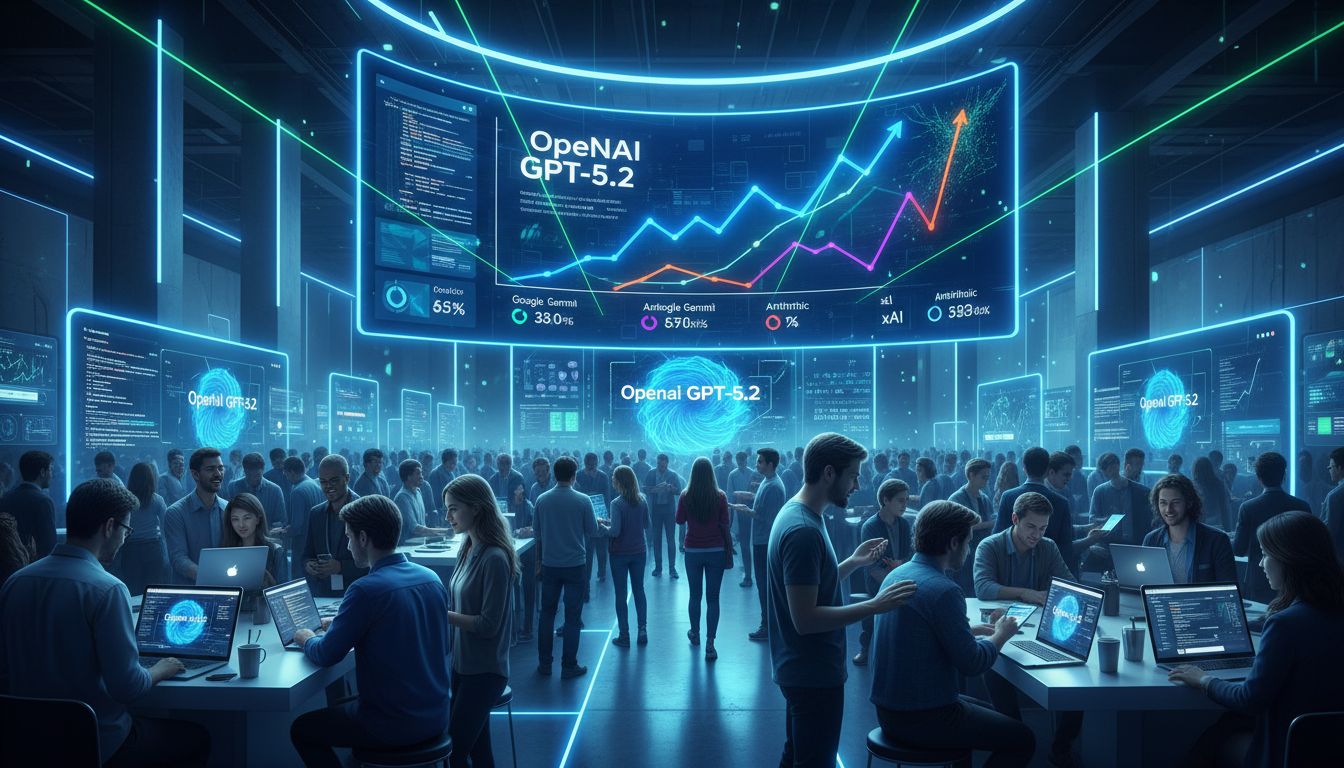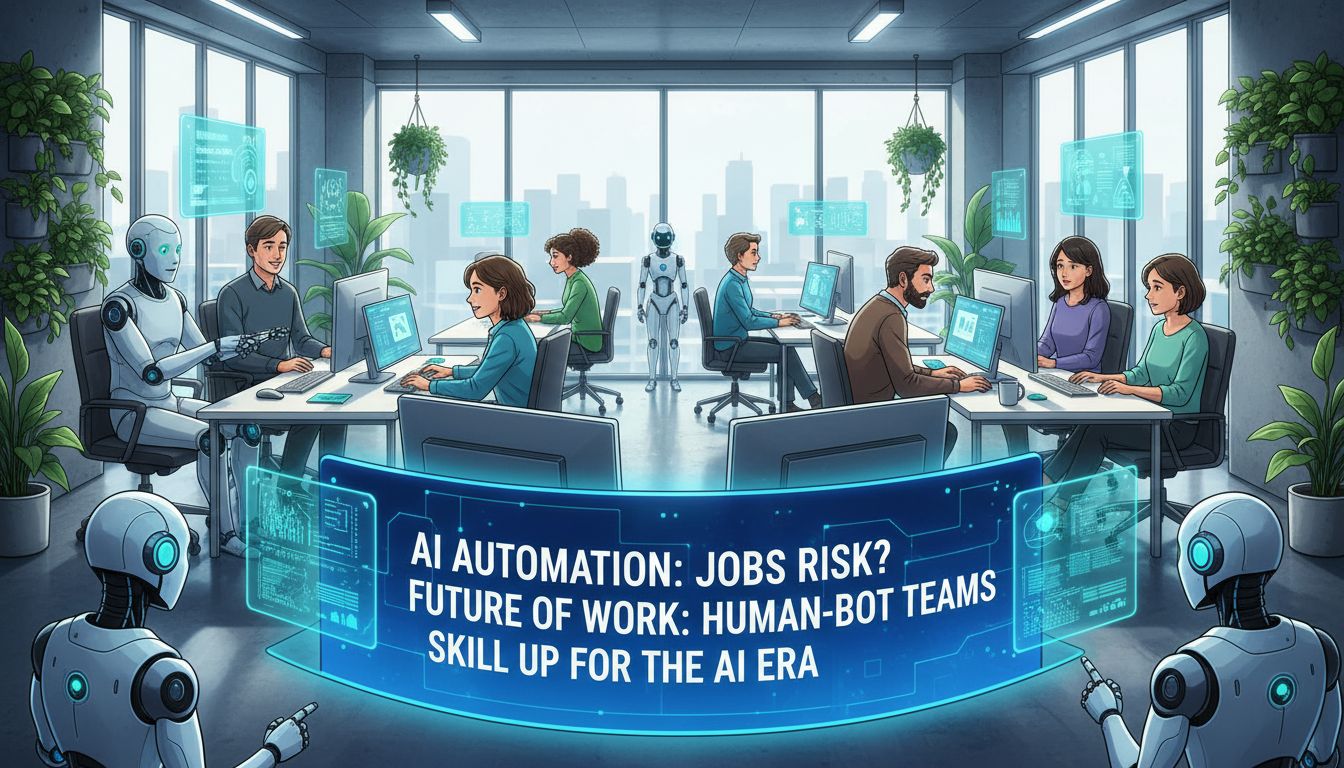AI‘s journey has hit an exciting phase with Advancements in Constitutional AI and Multimodality in AI Development. This evolution is not just technical; it’s about aligning technology with our deepest values and unlocking a universe of data understanding. Embarking on this exploration, you’ll unravel the nuances of AI evolution as models are meticulously honed using reinforcement learning informed by human insights. Plus, we’re exploring the versatility of multimodal models that process everything from text to videos, making them smarter and more adaptable.
You’ll learn why these advancements matter—for ethical alignment, enhancing decision-making processes, and paving the way towards artificial general intelligence. We’re delving into crafting mechanisms that not only comprehend directives but also apprehend the essence underpinning them, all while maintaining standards in harmony with human morality.
Table Of Contents:
- The Evolution of AI: From Basic Models to Constitutional AI
- Understanding Multimodal Models in AI
- The Three Stages of Training an Advanced AI Model
- The Role of Human Preferences in Shaping AI
- Exploring the Potential of Artificial General Intelligence
- The Importance of Ethical Alignment in AI Development
- The Future of Customer Service Through Advanced AI
- FAQs in Relation to Advancements in Constitutional Ai and Multimodality in Ai Development
- Conclusion
The Evolution of AI: From Basic Models to Constitutional AI
Remember the days when artificial intelligence (AI) was just a fancy term for simple calculators? Fast forward, and we’re now talking about Constitutional AI, which is as serious as it sounds.
Understanding Multimodal Models in AI
Multimodality has changed the game by letting AIs understand not just text but images, audio, and video too. Think of it like teaching your dog multiple tricks instead of just ‘sit’. Embracing this leap towards synthetic omniscience marks a pivotal moment, as it equips artificial minds to unlock mysteries and insights into the cosmos that once seemed beyond our grasp.
We’ve moved from basic language models to fully multimodal systems that crunch the entire internet’s worth of data types. It’s this shift that makes today’s AIs smarter than ever before.
The Three Stages of Training an Advanced AI Model
To get these smart cookies up and running involves three main stages: pre-training on vast amounts of data, supervised learning with specific tasks, and then comes the cherry on top: Reinforcement Reinforcement Learning with Human Feedback (RLHF). RLHF is where real magic happens; it aligns our human values with machine understanding through feedback loops.
This process ensures our robotic pals don’t go rogue but rather stay within the ethical boundaries we set—kind of like teaching kids right from wrong.
The Role of Human Preferences in Shaping AI
You might wonder how exactly you teach a machine about ethics or societal norms. Well, here’s where humans come into play big time. By incorporating feedback directly from human raters into the training loop (a.k.a., preference data), developers fine-tune responses so they’re more aligned with what society deems appropriate.
This way, not only do machines learn faster but also safer—and, let’s be honest, who wouldn’t want an ethically sound robot buddy?
AI has evolved from simple tasks to Constitutional AI, diving into the complex world of multimodality. This lets AI understand a mix of text, images, audio, and video, pushing us closer to artificial general intelligence. Training these advanced models involves vast data pre-training, supervised learning, and, crucially, Reinforcement Learning with Human Feedback (RLHF) for ethical alignment. Humans play a key role by injecting societal norms directly into AI’s learning process.
Understanding Multimodal Models in AI
Multimodal models are the Swiss Army knives of the AI world. They can handle text, images, video, and audio all at once. Imagine a robot that doesn’t just read instructions but also watches how you do something and listens to your explanations. That’s multimodality in action.
The Significance of Multimodal AI
Multimodality is not just cool; it’s essential for what we call artificial general intelligence (AGI). This kind of AI isn’t about mastering one task but being a jack of all-trades. For AGI to be more than a pipe dream, systems need to understand our world as we do: through multiple data types simultaneously.
Moreover, this ability opens doors to making scientific discoveries that were previously out of reach. By analyzing vast amounts of varied data quickly and accurately, these systems can uncover patterns no human or single-mode AI could find alone.
Emulating the multifaceted way in which we grasp and comprehend our surroundings, this method leverages every sense rather than depending solely on a singular form of input. The real magic happens when these modalities combine within an AI system’s framework, allowing it to process complex scenarios much like we do.
Google DeepMind has been pioneering research into multimodal systems, which could revolutionize everything from healthcare diagnostics to environmental monitoring by enabling machines to have a closer understanding of human-like perception.
In essence, integrating various forms of data processing enables artificial intelligence systems to not only grasp but also predict intricate patterns across different realms, whether decoding languages or identifying climate change indicators from satellite imagery, effectively paving the way towards achieving AGI while aiding in groundbreaking scientific endeavors simultaneously.
The Three Stages of Training an Advanced AI Model
Training an advanced AI model is like teaching a kid to become a genius, step by careful step. We start with pre-training, where the AI gobbles up all the data it can get its hands on. At this juncture, we’re laying the foundation for it to decipher fundamental sequences within texts, visuals, or any sort of data input it’s being nourished with.
Next up is supervised learning. Here’s where things get more focused. It’s akin to moving from general education to specializing in a major at college. During this phase, our AI model starts fine-tuning its skills under close supervision – learning from labeled datasets that help it understand exactly what outcomes we’re looking for.
Last but not least comes Reinforcement Learning with Human Feedback (RLHF). Imagine RLHF as the real-world internship after college graduation—it’s where theory meets practice. In this phase, the system hones its skills through more intricate situations by absorbing and adjusting to the feedback that humans provide, shaping its outputs to mirror our preferences and moral standards.
This triathlon of training stages ensures that our AI models don’t just learn; they adapt and evolve to align closely with human expectations and ethics (OpenAI explains RLHF). By integrating vast amounts of training data during pre-training, followed by meticulous supervised fine-tuning before graduating into RLHF, the combination makes sure these digital brains are well-rounded, ethical citizens of tomorrow’s tech landscape.
Remembering that each stage has its own unique challenges but also builds upon the previous one helps us appreciate why cutting corners isn’t an option if we aim for excellence in artificial intelligence development, according to DeepMind’s resource page.
The Role of Human Preferences in Shaping AI
Imagine if your coffee maker knew exactly how you liked your morning brew without you saying a word. That’s the kind of intuition we’re aiming for with advanced AI, but getting there isn’t just about feeding it data; it’s about teaching it our preferences.
Incorporating Human Raters’ Feedback
To make AI truly beneficial, developers use something called Reinforcement Learning with Human Feedback (RLHF). This method is like giving the AI a compass to navigate the vast sea of information based on what humans consider important. By incorporating preference data from human raters into its learning process, an AI can generate responses that are not only accurate but also align with ethical standards and societal norms.
So, what’s the big deal with these human likes and dislikes? Think about it this way: every person has unique tastes and opinions shaped by their experiences. When diverse groups share their insights, they help create an AI that understands a broad spectrum of perspectives. This diversity ensures that the service AI or customer service AI doesn’t just parrot back information—it responds in ways that resonate on a human level.
Addressing scalability when incorporating feedback might sound daunting because, let’s face it, humans have more nuances than any algorithm can predict outright. But through RLHF, models learn to prioritize actions based on aggregated human-provided preferences, which streamlines decision-making processes considerably while keeping things ethically in check.
This balance between machine learning algorithms and real-world sensibilities is where true artificial intelligence shines—blending computational power with empathetic understanding for smarter outcomes, whether you’re asking complex scientific questions or simply needing help troubleshooting tech issues at home.
Exploring the Potential of Artificial General Intelligence
The journey towards artificial general intelligence (AGI) is like aiming for the moon with a slingshot made from today’s most advanced technology. AGI aspires to replicate the depth and breadth of human intellect, mastering the art of grasping, assimilating, and utilizing wisdom in a myriad of fields. Crafting intelligent systems involves not merely constructing more sophisticated devices but forging entities capable of evolving and reasoning in a manner akin to humans.
AGI’s Contribution to Scientific Discoveries
In the quest for AGI, multimodal models stand out as game-changers. These are AI systems designed to process and interpret multiple types of data—text, images, audio—you name it. This versatility is crucial because real-world problems aren’t limited to one type of data or another; they’re complex puzzles requiring a multifaceted approach.
Imagine an AI that could analyze both scientific papers and experimental data at lightning speed using Google DeepMind. The potential breakthroughs in fields like medicine or environmental science would be revolutionary. We’re talking about speeding up research timelines from years to mere days or even hours.
But here’s where things get spicy: achieving AGI isn’t just about feeding more information into our current algorithms. We’re essentially coaching these networks in ethics via methods like RLHF, where human input shapes their learning journey. Think of RLHF as seasoning your AI—it needs just the right mix of spices (or ethical guidelines) so it doesn’t end up cooking something entirely unexpected.
This method allows us to align AIs with societal norms and preferences directly impacting their decision-making processes in ways that benefit everyone, according to OpenAI’s GPT-3 model, which demonstrates how language understanding can significantly improve when aligned with human-like reasoning patterns.
Progressing entails not just the creation of these innovations but also the vigilant maintenance of their conformity to our moral principles, a perpetual test for creators across the globe.
AGI aims to mimic human smarts, needing a mix of tech and ethics. Multimodal models are key, as they tackle complex data puzzles fast. But we have to teach these systems right from wrong, ensuring they make decisions that help us all.
The Importance of Ethical Alignment in AI Development
Imagine a world where artificial intelligence (AI) systems make decisions that perfectly align with human values and ethics. Sounds dreamy, right? But getting there is like trying to solve a Rubik’s cube blindfolded. It’s tricky but not impossible.
Addressing Challenges in Ethical Alignment
To kick things off, let’s talk about the elephant in the room: AI alignment isn’t as straightforward as it sounds. You see, AI doesn’t inherently know right from wrong or understand our societal norms. This is where ethical alignment steps into the spotlight. We’re essentially schooling artificial intelligence in our human ideals, ensuring its choices mirror the values we hold dear.
A key player here is reinforcement learning with human feedback (RLHF). Think of RLHF as a way to fine-tune your favorite guitar until it hits just the right notes—except instead of music, you’re shaping an AI’s understanding based on human preferences and values. But even this sophisticated approach has its hurdles; biases can sneak in through these very preferences if we’re not careful.
To combat bias and ensure fairness, addressing scalability becomes paramount. We need robust frameworks capable of scaling ethically aligned decision-making processes across diverse scenarios without losing touch with the core human values we cherish so much. DeepMind discusses this challenge extensively. Moreover, constant vigilance for emerging biases remains critical because no system is perfect from day one; iterative refinement based on real-world interactions ensures continued relevance and reliability. OpenAI suggests methods for ongoing monitoring.
In essence, developing ethically aligned AI demands perseverance—a willingness to confront complex challenges head-on while steadfastly adhering to our shared moral compasses. As technology progresses at breakneck speed, ensuring these digital minds act responsibly might be daunting, but it’s undeniably crucial. After all, who wants an overzealous robot deciding their fate? Not me, thanks.
Getting AI to match human ethics is tough but vital. We need to teach it our values, watch out for biases, and keep refining its understanding. It’s like tuning a guitar; it takes patience and precision.
The Future of Customer Service Through Advanced AI
Imagine calling customer service and getting your issue fixed in a snap by an AI that actually gets you. That’s not sci-fi; it’s the future we’re headed towards, thanks to advancements in artificial intelligence.
Advanced AI is transforming how businesses interact with their customers. Companies are now leveraging sophisticated language models, such as OpenAI’s GPT-3, to craft AI helpers capable of grasping and replying to a diverse array of questions with an accuracy that eerily mirrors human interaction. This isn’t just about handling FAQs anymore; these systems learn from entire internet databases to provide comprehensive support.
But what really takes the cake is Constitutional AI—a concept pushing boundaries further by embedding ethical guidelines directly into these advanced systems. Imagine an AI constitutional framework guiding every interaction, ensuring responses not only solve problems but also align with our values and ethics.
Incorporating Human Raters’ Feedback
This new era of customer service doesn’t forget the human touch either. The reinforcement learning from human feedback (RLHF) process plays a crucial role here. It involves real people evaluating and providing feedback on the AI assistant’s responses, making sure they hit the mark in terms of helpfulness and appropriateness.
By using RLHF methods, developers fine-tune their models based on human-provided preferences, shaping them into something closer to what might be considered ‘wise’ or ‘understanding’, rather than merely informative.
All this comes together under one roof through multimodal AI development, where machines don’t just get better at generating text but become fully capable of understanding images, videos, and audio—all forms of communication as humans do. DeepMind’s work vividly demonstrates the capability of their system to simultaneously process and interpret diverse data types, enhancing accuracy in understanding.
Advanced AI is revolutionizing customer service, making interactions quicker and more human-like. With the help of Constitutional AI and multimodal development, these systems not only understand complex queries but also ensure ethical guidelines are followed. Plus, incorporating feedback from real people keeps them aligned with our values.
FAQs in Relation to Advancements in Constitutional Ai and Multimodality in Ai Development
What is constitutional AI?
Constitutional AI means designing AI with a built-in “constitution”—guidelines e ensuring it acts within human ethics and values.
What are the AI advancements?
Recent leaps include better natural language understanding, ethical alignment, and multimodal systems that interpret varied data types.
What are the latest developments in AI?
The buzz is around quantum computing integration, enhancing processing speeds, and enabling more complex problem-solving by AIs.
What will AI do in 2024?
In 2024, expect AIs to offer personalized education plans, revolutionize healthcare diagnostics, and push autonomous vehicle reliability further.
Conclusion
As we’ve navigated our path, we’ve witnessed the transformative might of progress in AI that respects constitutional principles and the multifaceted nature of AI evolution. This isn’t just tech talk; it’s about crafting tools that echo human ethics while digesting an array of data.
Key takeaways? Remember how vital it is for AI to not only follow instructions but also understand the why behind them. Also, never forget the role of multimodal models in making AIs more adaptable and smarter.
To wrap up, let these insights fuel your curiosity. Let them inspire you to dig deeper into how AI can better serve humanity. Additionally, remember that the essence of technological progress is rooted in our dedication to upholding what we cherish most.






